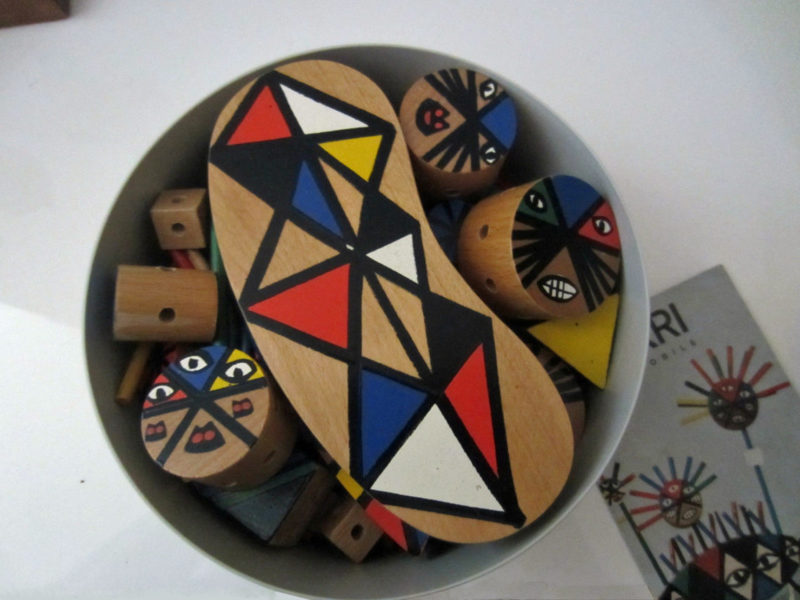
What consists of waste wood, is small, colourful and worth several hundreds of euros today? No idea? Hamburg’s Christine Querhammer hadn’t a clue either, but she had a hunch that the little box with its colourful and playful building set that she’d been given as a gift by her grandpa in 1961 couldn’t be entirely worthless. She took the round cardboard box to the German Bares für Rares TV programme and asked presenter Horst Richter and his design expert, art dealer Detlev Kümmel, to explain what it was all about. Kümmel was quickly able to shed light on what will not have puzzled the odd design aficionado or other for long either: the expressively painted wooden game with lots of different parts was Wilkhahn’s Kri-kri.
The Kri-kri Phantomobile was created by sculptor Maria Biljan-Bilger Perz as a game in the early 1960s after Fritz Hahne, Wilkhahn’s CEO at the time, had been encouraging practical ways of using wood waste from chair production. Nowadays this is called upcycling, but was not yet a major issue during the era of the economic miracle. At some point Hahne discovered that instead of waste, new planks of wood were being used because waste wood just simply wasn’t profitable as it required sorted according to size and thickness. Which is why he discontinued the toy’s production. But this had no impact on the popularity of the toy, particularly in the case of adults who loved art. Quite the contrary: it became a popular collector’s item due to the relatively low number of the sets produced. The regard in which it was held in the popular TV programme shows that keeping these types of design highlights from Wilkhahn can be worthwhile.
Click here to watch the Bares für Rares programme on 10 July 2017 (only in German):
Click here to read about: Wilkhahn’s history or watch:
